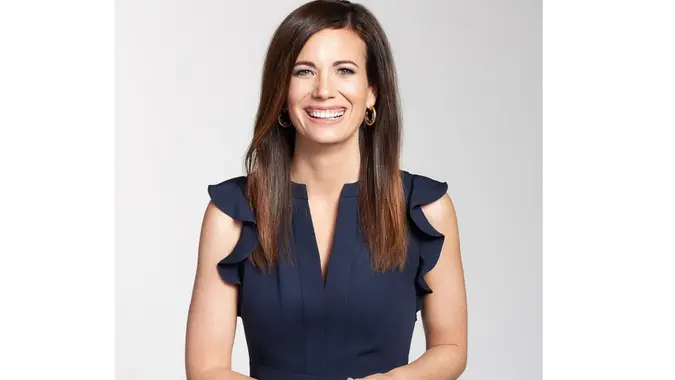5 Ways To Tell If You’re Middle Class or Upper-Middle Class

Commitment to Our Readers
GOBankingRates' editorial team is committed to bringing you unbiased reviews and information. We use data-driven methodologies to evaluate financial products and services - our reviews and ratings are not influenced by advertisers. You can read more about our editorial guidelines and our products and services review methodology.

20 Years
Helping You Live Richer

Reviewed
by Experts

Trusted by
Millions of Readers
Historically, the middle class is unchained from the financial stresses that define day-to-day life for impoverished people or the basic constraints of the always rising cost of living. The upper-middle class is doing even better — but they’re not quite rich, either.
The boundaries that define both classifications are loose, blurry and fairly arbitrary. However, the degree to which you possess five defining characteristics can help you determine your rung on the ladder, as sometimes it’s about your perception, lifestyle and comfort level, more so than government data.
Here are five indicators that you’re a member of either the middle or upper-middle class — and clues as to which category most accurately defines your status.
You’re Financially Stable
Scott Allen is a licensed agent and co-founder of Seniors Life Insurance Finder. As a personal finance expert with more than a decade of experience in the insurance and financial services industries, assessing people’s financial station in life is one of his primary skill sets.
According to him, not living check to check is the defining characteristic of those who escape the struggles of lower- and lower-middle-class life.
“Members of the middle class and upper-middle class tend to have a certain level of financial stability,” Allen said. “This means having a steady income that is sufficient to cover basic necessities, as well as some discretionary spending for non-essentials. They also tend to have savings or investments that they can rely on in case of emergencies.”
Which One Are You?
While the middle class is comfortable — typically several pay periods removed from financial disaster — the upper-middle class has more money to burn. They might be able to take a vacation every year, buy higher-end vehicles and retire early.
You’re College Educated
Postsecondary education is another key indicator of class. While there are many exceptions, a college degree is often the ticket to the high-paying white-collar jobs that are hallmarks of middle- and upper-middle-class life.
“Education is often seen as a key factor in determining social class,” Allen said. “Members of the middle class and upper-middle class typically have at least a college degree, which opens up more opportunities for higher-paying jobs and career advancement.”
Which One Are You?
Members of the upper-middle class are more likely to have graduate or other advanced degrees that provide access to more elite careers, which pay more and offer greater professional autonomy and job security. They’re also more likely than members of the middle class to be able to afford college for their kids with little or no student borrowing.
You Own Real Estate
Homeownership has been one of the hallmarks of financial security since the end of World War II and remains so today.
“Owning a home is often seen as a sign of being part of the middle or upper-middle class,” Allen said. “It not only provides stability and security, but it also allows individuals to build equity and potentially increase their wealth.”
Which One Are You?
People in the middle class are more likely to own a home than those lower down on the ladder, but members of the upper-middle class might own second homes or investment properties as well as primary residences.
You Have Access to Quality Healthcare
Low-income households tend to suffer from diminished access to quality medical care and are more likely to suffer from negative health outcomes.
“Access to quality healthcare is another indicator of middle or upper-middle class status,” Allen said. “These individuals are more likely to have health insurance, which can cover the costs of medical care and prevent financial strain in case of illness or injury.”
Which One Are You?
While both classes are likely to be insured and have access to quality care, middle-class Americans are much more likely than upper-middle-class Americans to have medical debt. In fact, recent studies show that the middle class holds more medical debt than all other income classes.
You Have Social Capital
The rich and well-connected can make problems disappear just by picking up the phone, while the poor are often left to manage legal, financial and professional challenges alone.
Those in between don’t have the influence and clout of the monied class, but they’re much less likely to navigate life’s most trying obstacles on their own.
“Members of the middle class and upper-middle class often have a strong network of connections and relationships,” Allen said. “This can provide access to job opportunities, financial advice and other resources that can help maintain or improve their social standing.”
Which One Are You?
The upper-middle class is more likely than the middle class to have access to pay-to-play human networks, like those attained through pricey and exclusive social club memberships.
Final Take To GO: General Income Guidelines for the 5 Socioeconomic Classes
Whether you are a white collar professional or live in upper-income households, the middle class includes both a broad generalization of who it includes as well as a narrow point of focus for inclusion. These widely accepted income guidelines outline the five socioeconomic classes in the United States.
- Lower class: The bottom 20% of earners with household incomes not exceeding $28,007. It’s important to note that there isn’t a universal standard of socioeconomic status. For example, some economists, sociologists and academics place the “working class” between the lower and middle classes.
- Lower-middle class: Those in the 20th to 40th percentile of household income, between $28,008 and $56,000. More specifically, according to Pew Research Center, lower-income households had incomes less than $56,600,
- Middle class: According to the Pew Research Center, middle-income households – those with an income that is two-thirds to double the U.S. median household income – range from about $56,600 to $169,800 for middle-class incomes.
- Upper-middle class: Households in the 60th to 80th percentile, with incomes between approximately $89,745 and $149,131.
- Upper class: As the top 20% of earners, upper-income households had incomes greater than $169,800.
It’s important to note that those dollar amounts are based on national averages. Area median income (AMI) is a much better indicator of which class you fall into because it’s specific to where you live. The Fannie Mae AMI Lookup Tool can show which income percentile you belong to relative to your location.
Caitlyn Moorhead contributed to the reporting for this article.
 Written by
Written by  Edited by
Edited by 

























